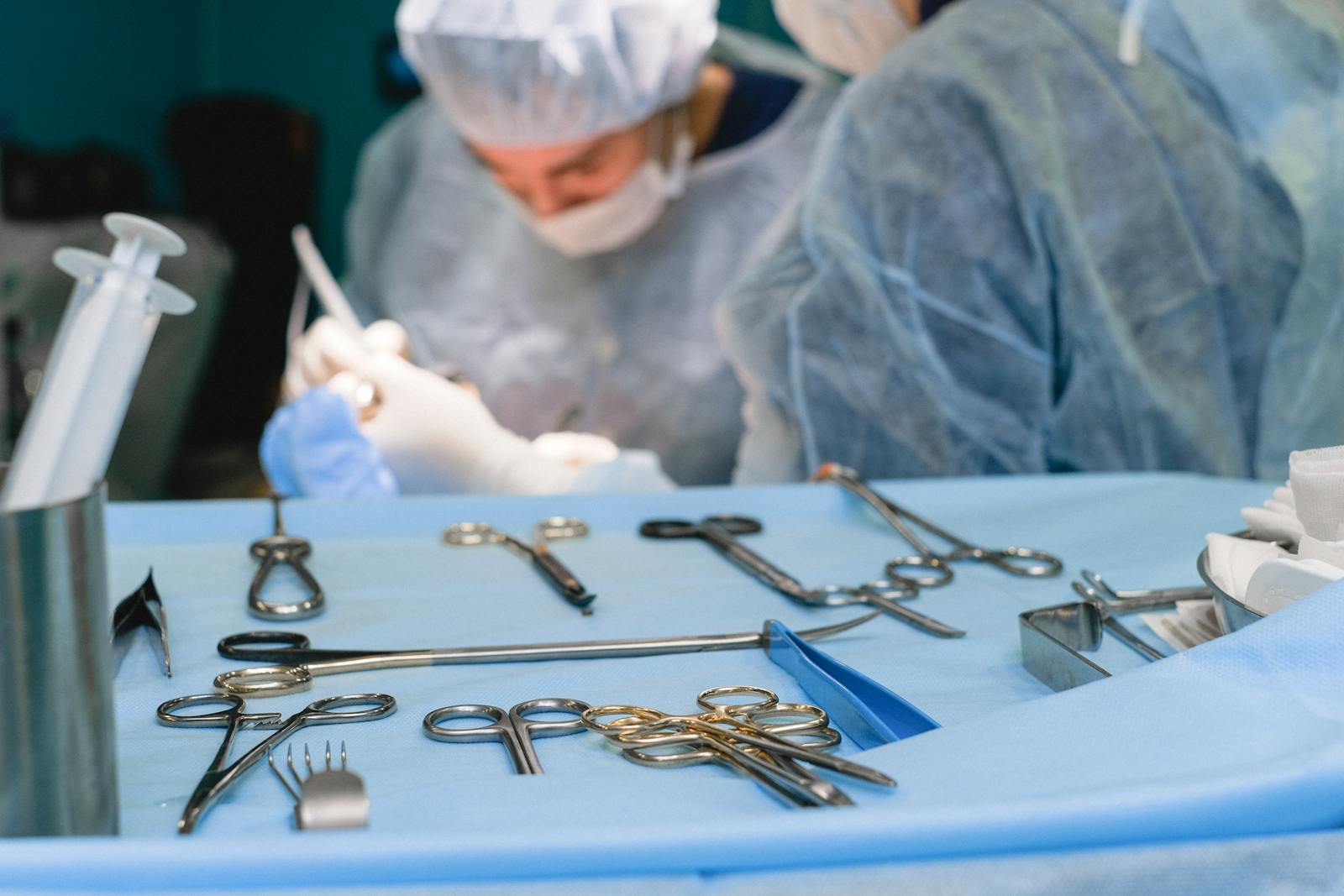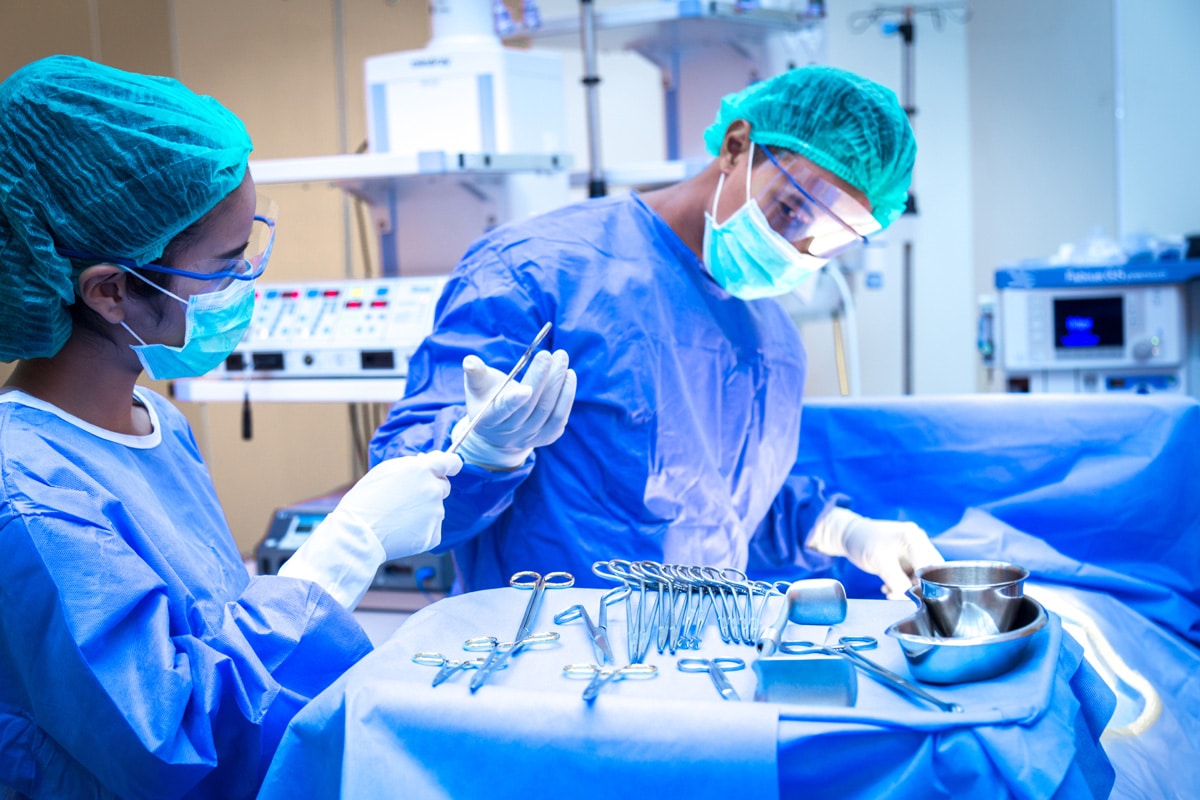The decision to opt for spine surgery often comes after a complex maze of considerations. It is usually contemplated when all non-surgical treatments have been exhausted without substantial relief. However, even with this understanding, the precise point at which surgery becomes necessary remains a subject of professional discourse. This conversation takes into account the severity of the patient’s condition, the potential risks of the procedure, and the anticipated improvement in the quality of life post-surgery. Let’s explore further into this critical medical decision-making process that determines when spine surgery becomes unavoidable.
Understanding Spine Anatomy
To fully comprehend when spine surgery might be necessary, it is important to first have a fundamental understanding of the intricate anatomy of the spine. The spine, or vertebral column, is a complex structure comprised of vertebrae, intervertebral discs, and various ligaments and muscles. The vertebrae structure basics include cervical, thoracic, lumbar, sacral, and coccygeal vertebrae, each with distinct characteristics and functions.
The spinal curvature types are another vital aspect of understanding spine anatomy. The spine naturally curves in an ‘S’ shape when viewed from the side, which includes the cervical, thoracic, and lumbar curves. The cervical and lumbar curves are concave (curving inward), providing flexibility and shock absorption. In contrast, the thoracic and sacral curves are convex (curving outward), granting strength and stability.
The specific arrangement of vertebrae and spinal curves work harmoniously to support the body’s weight, allow movement, and protect the spinal cord. Any deviation from this normal alignment – whether from injury, aging, or disease – can potentially necessitate surgical intervention. Understanding these basics offers a foundation to appreciate when spine surgery might be deemed necessary, a topic that will be explored further subsequently.
Common Spinal Conditions
Several prevalent spinal conditions can disrupt the normal functioning and structure of the spine, potentially warranting the need for surgical intervention. These conditions often present with a range of symptoms, some of which may correlate with neurological issues, indicating a more crucial degree of spinal compromise.
One of these conditions is spinal stenosis, characterized by a narrowing of the spinal canal, which can exert pressure on the spinal cord and nerves, leading to pain, numbness, and weakness in the extremities. Similarly, herniated discs, which occur when the soft center of spinal discs protrudes through the disc wall, can cause localized pain and neurological symptoms.
Spinal deformities also impact the spine’s structure and function. Conditions like scoliosis, kyphosis, and lordosis involve abnormal curvature of the spine, which can lead to pain, disability, and in severe cases, impact the function of essential organs.
In some cases, these conditions can be managed conservatively. However, when non-surgical interventions fail to provide relief, or when the patient’s quality of life is significantly affected, surgical intervention may become necessary. The correlation of severe neurological symptoms with these conditions often signals this need.
Chronic Back Pain Causes
Chronic back pain can be attributed to a wide array of factors. In some cases, lifestyle choices, such as prolonged sitting or heavy lifting, might contribute to persistent discomfort. However, certain diseases can also induce chronic pain, necessitating a more thorough understanding of the underlying conditions.
Identifying Chronic Back Pain
Understanding the causes of chronic back pain is essential in determining the necessity for spine surgery. Chronic back pain can stem from various conditions, including degenerative disc disease, spinal stenosis, and lumbar spondylosis. Identifying chronic back pain involves careful evaluation of the patient’s symptoms, medical history, and physical condition, often supplemented by imaging studies. Pain management techniques play a vital role in this process, allowing doctors to assess the severity and persistence of the pain. Additionally, an emotional impact assessment is important as chronic pain can lead to mental health issues like depression and anxiety. It’s important to distinguish between temporary discomfort and chronic pain, as only the latter may require surgical intervention.
Lifestyle Factors and Pain
Numerous lifestyle factors, including physical inactivity, poor posture, and obesity, have been identified as important contributors to chronic back pain. The impact of exercise, or the lack thereof, can worsen this discomfort. Regular physical activity strengthens the muscles that support the spine, reducing the likelihood of pain or injury. Equally important is the relevance of posture. Slouching or incorrect lifting techniques can strain spinal structures, leading to persistent pain. Additionally, obesity puts additional stress on the spine, increasing the risk of degenerative disc disease. Therefore, by maintaining an active lifestyle, practicing good posture, and managing weight, individuals can greatly reduce their susceptibility to chronic back pain, potentially negating the need for invasive spine surgery.
Diseases Causing Chronic Pain
While lifestyle factors play a significant role in back pain, certain diseases also contribute to chronic discomfort, often requiring extensive medical intervention. For instance, degenerative disc disease and spinal stenosis are common culprits, leading to persistent pain that can disrupt everyday activities. Osteoarthritis, another contributor, manifests as joint inflammation and can result in spinal pain.
In managing these issues, pain management techniques such as nerve blocks and spinal cord stimulation are often employed. These methods aim to alleviate pain, improve function, and enhance quality of life. Complementary therapies, including acupuncture and physical therapy, can also be beneficial. They provide a holistic approach to managing the discomfort, reducing reliance on medication, and potentially postponing or even eliminating the need for spine surgery.
Diagnosing Spinal Issues
In the field of medicine, accurately diagnosing spinal issues forms the crux of determining the necessity for spine surgery. This is particularly important in selecting patients who will most benefit from surgical intervention. A thorough diagnosis process involves a detailed clinical evaluation, with emphasis on the importance of neurological examination.
Neurological examination provides crucial insights into the patient’s reflexes, muscle strength, sensory perception, and overall neurological health. These data points can hint at the presence of spinal ailments such as herniated discs, spinal stenosis, or tumors. Physical symptoms such as pain, numbness, or weakness are also analyzed to help pinpoint the problematic area.
Supplementing these examinations are spinal imaging techniques, which help visualize the internal structure of the spine in detail. Techniques such as X-rays, CT scans, and MRIs provide a clear picture of the patient’s spinal anatomy, allowing medical professionals to identify abnormalities such as bone spurs, disc degeneration, or spinal cord compression.

Non-Surgical Treatment Options
Before considering invasive procedures like spine surgery, exploring non-surgical treatment options is an essential step, as these alternatives often provide significant relief to patients suffering from various spinal conditions. Non-surgical methods, including alternative therapies and pain management techniques, have proven effective in many cases, reducing the need for surgery.
Alternative therapies may encompass a broad spectrum of treatments, from physical therapy and chiropractic care to acupuncture and yoga. These options aim to improve spinal health by enhancing flexibility, strength, and overall well-being. They often work best when combined in a holistic program tailored to an individual’s specific needs and condition.
Pain management techniques play an important role as well, primarily focusing on minimizing discomfort and enhancing quality of life. These may involve the use of medications, nerve blocks, or non-pharmacological interventions such as cognitive-behavioral therapy. Additionally, lifestyle modifications, including healthier diet and regular exercise, can significantly contribute to managing spinal pain.
It’s essential to remember that these non-surgical treatments require patience and consistency, as improvements are generally gradual. However, they offer the benefit of fewer risks and complications compared to surgical interventions. Consulting with a healthcare professional can help determine the most suitable approach for each individual case.
When Surgery Becomes an Option
Spine surgery becomes an option when non-surgical treatments fail to alleviate the patient’s symptoms or improve the quality of life. This juncture requires thorough identification of surgical indications and a detailed evaluation of potential risks versus benefits. The decision-making process should be patient-centered, taking into account their overall health status, personal preferences, and the anticipated impact of surgery on their lifestyle and functional capacity.
Identifying Surgical Indications
Determining the necessity of spine surgery often hinges on the identification of clear surgical indications which signal that non-surgical interventions may no longer be sufficient. The presence of spinal deformities is one such indication. These deformities can include conditions such as scoliosis, kyphosis, or spondylolisthesis, often resulting from genetic predispositions or congenital abnormalities. Persistent, severe pain, neurological symptoms, or functional impairment despite conservative treatment are other key signs that surgery might be necessary. Additionally, imaging studies revealing spinal instability, compression of neural elements, or progressive deformity can also indicate a need for surgical intervention. The decision for surgery, however, must always be individualized, considering the patient’s overall health, lifestyle, and personal preferences.
Weighing Risks and Benefits
Once clear surgical indications are identified, the ensuing step involves a thorough evaluation of potential risks and benefits, a critical process that informs the decision to proceed with spine surgery. This process requires an in-depth and meticulous comparison of the following:
- Surgery alternatives: Non-surgical interventions such as physical therapy, medication, or lifestyle changes might provide relief with lesser risks.
- Potential surgical complications: These could range from infection, bleeding, neurological damage to failed back surgery syndrome.
- Patient experiences: Understanding past patient experiences can provide valuable insights into recovery times, post-operative pain, and overall success rates.
The decision for spine surgery should be informed, precise, and based on a detailed understanding of these factors. It is a significant commitment and should be considered only when the potential benefits outweigh the risks.
Different Types of Spine Surgery
In the field of medical science, there exists a variety of surgical procedures specifically designed to address the manifold intricacies of the human spine. Surgical advancements have led to the development of several types of spine surgeries, each corresponding to specific spinal conditions and patient experiences.
One of such procedures is discectomy, which is employed to remove herniated disc material that is pressing on a nerve root or the spinal cord. Laminectomy, on the other hand, involves the removal of the back part of the vertebra that covers the spinal canal to create more space for the nerves or spinal cord. Foraminotomy is another type, which focuses on enlarging the passageway where a nerve root exits the spinal canal.
Spinal fusion, often performed together with other surgical procedures, aims to eliminate motion between vertebrae and prevent the stretching of nerves, ligaments, and muscles. Other types include disk replacement and spinal decompression, each designed with unique patient experiences in mind. The choice of procedure largely depends on the specific condition, patient’s overall health status, and the surgeon’s expertise. These surgeries have revolutionized the field, improving patient outcomes and quality of life.
Preparing for Spine Surgery
The preparation phase for spine surgery, an intricate process in itself, requires careful consideration of several factors including the patient’s health history, physical fitness, and mental readiness. Optimum preparation can alleviate surgical anxiety and enhance postoperative recovery.
- Health History Evaluation: A thorough assessment of the patient’s past and present health conditions is paramount. This may include a review of any pre-existing medical conditions, medications currently taken, and previous surgical experiences. This information enables the surgical team to anticipate potential complications and plan for a safe and effective procedure.
- Physical Fitness: Pre-operative exercises are essential to improve the patient’s physical strength and endurance, which can directly influence the surgery’s outcome. A tailored exercise regimen can minimize the risk of postoperative complications and shorten the recovery period.
- Mental Readiness: Addressing surgical anxiety is an important part of the preparation. Psychological support and education about the procedure can help patients manage their fears and expectations. This mental preparation can greatly improve their overall surgical experience.

The Spine Surgery Procedure
Often, the procedure of spine surgery begins with the administration of anesthesia, effectively ensuring patient comfort and immobility throughout the operation. Anesthesia selection is critical; it’s chosen based on the patient’s health status, the type of procedure, and the surgeon’s preference. It can range from local to general anesthesia.
The advancement of surgical innovations has greatly improved the precision and safety of spine surgery. Surgeons now utilize cutting-edge technology like computer-assisted navigation and minimally invasive techniques. These innovations allow for smaller incisions, less tissue damage, and a shorter operation time.
Once anesthesia has taken effect, the surgeon makes an incision in the predetermined location. The extent of the incision depends on the specific surgical approach. Following this, the surgeon works to correct the spinal issue, whether it’s removing a herniated disk, fusing vertebrae, or decompressing the spinal cord.
A critical aspect during the procedure is intraoperative monitoring, where the patient’s neurological function is continuously assessed to prevent potential damage. After the issue has been addressed, the incision is closed, marking the end of the surgery.
This process, while intricate, has been refined over years of practice and the integration of modern technology, making spine surgery a viable solution for many patients.
Recovery and Rehabilitation
Exploring the recovery period post-spine surgery demands careful attention to post-operative care measures and the implementation of effective rehabilitation strategies. A comprehensive understanding of these components can greatly impact the outcome and success of the surgery. This section will examine the best practices for post-operative care and rehabilitation to optimize patient recovery.
Post-Operative Care Measures
After the completion of spine surgery, it is important to understand the significance of post-operative care measures in promoting successful recovery and ideal rehabilitation. The wound healing process and nutritional support are two crucial aspects of this care.
- Wound Healing Process: Adequate care of the surgical site is crucial to prevent infections and promote healing. This includes regular dressing changes and monitoring for signs of infection such as redness, swelling, or discharge.
- Nutritional Support: Proper nutrition is essential for healing. Consuming a diet rich in protein, vitamins, and minerals can expedite the healing process and strengthen the immune system.
- Physical Therapy: While not directly related to wound healing or nutrition, a carefully structured physical therapy program can help restore mobility and function in the post-operative phase.
Effective Rehabilitation Strategies
While post-operative care measures lay the groundwork for a successful recovery process, effective rehabilitation strategies further enhance and expedite this journey towards restored function and well-being. Incorporating rehabilitation technology, such as biofeedback devices and virtual reality, can foster a more engaging and personalized recovery experience. These tools provide real-time feedback, enabling patients to adjust their exercises and improve outcomes.
Physiotherapy benefits are profound, ranging from pain management to the improvement of strength and flexibility. A tailored regimen, under the guidance of a skilled physiotherapist, can greatly reduce recovery time, prevent secondary complications, and enhance overall quality of life. Ultimately, the integration of modern technology and physiotherapy practices in a patient’s rehabilitation program can yield excellent post-surgical results.
Risks and Complications
As with any surgical procedure, spine surgery carries certain risks and complications that need to be thoroughly understood and considered. Even when surgical alternatives are explored, the inherent risks cannot be entirely eliminated. Infection prevention is an important aspect of managing these risks, but other complications can occur.
These complications can be categorized into three primary elements:
- Surgical Complications: These include infection, bleeding, and nerve damage. Despite stringent infection prevention measures, surgical site infections can still occur. Excessive bleeding is another potential risk, which can cause serious complications.
- Anesthesia Related Risks: Anesthesia, although generally safe, carries risks such as allergic reactions, breathing problems, and even heart failure. It is important to discuss any pre-existing conditions or allergies with your anesthesiologist.
- Postoperative Complications: These may include blood clots, pneumonia, or chronic pain. Physical therapy is often recommended to mitigate these risks.
Living With a Spinal Surgery
Getting through daily life post spinal surgery presents unique challenges and requires specific adjustments to guarantee best recovery and quality of life. The emotional impact of such a procedure is important, as patients often grapple with physical limitations and pain while adjusting to a new lifestyle. Feelings of frustration, anxiety, and depression may surface, impacting the overall recovery and healing process.
An integral part of managing these emotional shifts lies in establishing strong support systems. Physical therapists, occupational therapists, psychotherapists, and social workers can provide valuable assistance, offering strategies to help patients cope with both the physical and emotional changes brought on by the surgery.
Family and friends also play an important role in this network of support. Their understanding, patience, and encouragement can help enhance the patient’s resilience, fostering a more positive mindset towards recovery.
Furthermore, joining a support group can provide a safe space for patients to share experiences, fears, and victories with others in similar situations. This shared understanding can greatly mitigate feelings of isolation and helplessness.
In essence, living with a spinal surgery is a complex journey that transcends physical healing, underlining the importance of addressing both emotional impact and fostering supportive networks for a holistic recovery.
Frequently Asked Questions
Can Spine Surgery Affect Other Parts of the Body?
Spine surgery, like any major procedure, can potentially affect other body parts due to surgery complications. The recovery timeline also varies, impacting overall physical functionality until full rehabilitation is achieved.
What Is the Cost of Spine Surgery?
The cost of spine surgery varies widely depending on the specific procedure, location, and surgeon’s expertise. It encompasses surgery financing, hospitalization expenses, post-operative care, and potential rehabilitation or physical therapy costs, among other factors.
Does Health Insurance Cover Spinal Surgery?
Health insurance typically covers spinal surgery, however, coverage varies based on insurance limitations and policy details. Pre-authorization requirements may apply, necessitating prior approval from the insurance provider before the procedure is undertaken.
What Are the Lifestyle Changes Needed Post-Surgery?
Post-surgery, lifestyle changes include incorporating rehabilitation exercises into daily routines to rebuild strength and flexibility. Dietary modifications are also essential, focusing on high-protein, nutrient-rich foods to aid in the healing process.
Can Spine Surgery Cause Emotional or Mental Health Challenges?
Yes, spine surgery can indeed precipitate psychological impacts. The physical stress and potential lifestyle changes post-surgery can challenge emotional resilience, potentially leading to mental health issues like depression or anxiety, if not addressed promptly and effectively.

